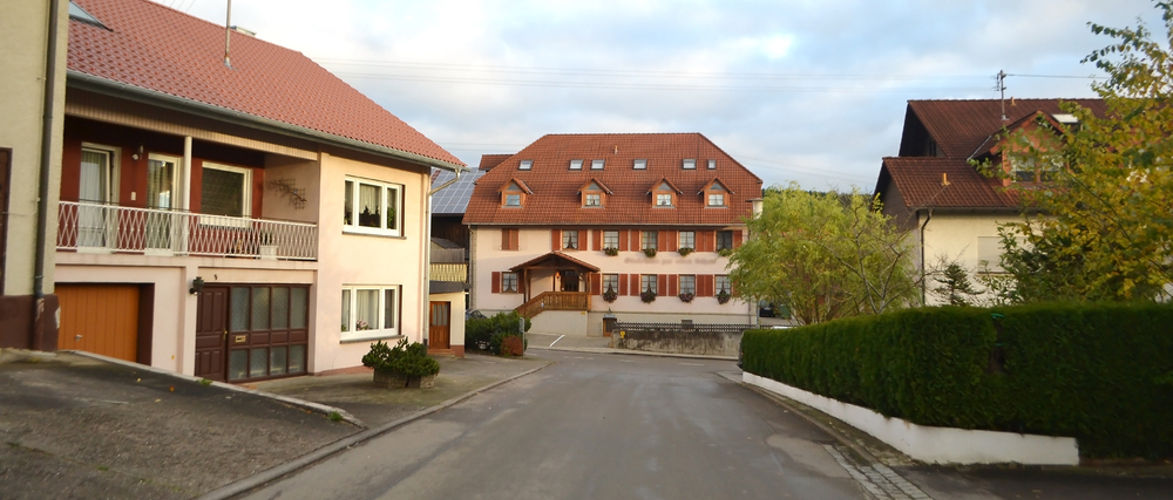Unearned income through monopolies and privileges
By Norbert Häring.
The value of companies and land, i.e. the capital of capitalists, consists largely of state-protected monopoly rights. Capital thus does not serve production and the satisfaction of needs, but the redistribution from workers and consumers to the owners of these rights.
In Part 1, the thesis was put forward that capital is not a factor of production that helps to satisfy the needs of the population, but rather the right to claim a part of the production for oneself. We now want to support this thesis with data.
This is most obvious in the case of land, which is indispensable for living and production. This is not a secondary aspect. The capital stock of the German economy, of 20 trillion Euros, as reported by the Federal Statistical Office, consists of only 2 trillion Euros, or one tenth, of “vehicles, machines and other equipment”. 9.3 trillion euros are accounted for by residential and commercial real estate, mainly residential real estate (domestic product calculation p.60). The large remainder consists mainly of intellectual property and military weapons systems.
This confirms once again what we saw in Part 1, that the means of production, which we should think of when talking about capital, make up a very small part of what makes up the wealth and power of the (large) owners of capital.
Lease as monopoly price
Soil as a surface in a particular area is not produced, but is simply there. It does not wear out and is not depreciated like machines and equipment. Rather, soil is becoming more and more expensive because it is becoming scarcer and more valuable as a result of population and economic growth. Ryan Collins promises that a better understanding of the specifics of land can help us to tackle the most pressing social problems, such as excessive property prices, inequality and stagnating productivity and has written a book on this subject entitled “Rethinking the Economics of Land and Housing” together with Toby Lloyd and Laurie Macfarlane.
The classic economist Adam Smith has his say in the book with the explanation:
(translation)
The basic pension is naturally a monopoly price. It is not based on what the owner has spent or at least what he needs in income, but on what the farmer can afford to pay.
In economists’ jargon, pension means ” unearned income”, for example in the word “monopoly pension”. The landowner gives his land to whoever is willing to pay the largest part of the profit that can be made from the management of that land. Nowadays, the price or rent is mainly determined by the location and the permitted usage. They usually have very little to do with investments made by landowners.
If a new road or suburban railroad is built, the owners of the developed plots of land can take most of the advantage in the form of higher land prices. When the economic power and incomes in a region increase, the landowners also benefit to a great extent. They usually do not have to contribute significantly to the costs.
Before the homeowners who have bought their homes expensively and with a high mortgage cry out: yes, it is true. The banks and the mechanisms of capitalism ensure that those who are not already rich, but need the financial sector to become homeowners, are among the system’s profiteers only with luck and to a limited extent. They have to pay so much to the previous owners and the banks in the form of high purchase prices, interest and compound interest that, at least for a long time, they are more likely to be among the poor than the rich in terms of living standards. But this group does not make up the bulk of land ownership. It is rather the political protective wall against the large fortunes, which serves to ward off taxes on land and property.
Even the classical economists like Adam Smith expected and feared that an ever greater share of the growth dividend would go to the landowners. Rising rents and leases would drive up wages and production costs and slow down economic development. For Marx the solution was clear: nationalization. Smith pleaded, much more moderately, for taxation of land value increases. The state’s tax burden should fall as much as possible on those who receive basic pensions, rather than on income from work or business. Taxing monopoly pensions does not damage performance incentives. It merely depresses net land prices to the extent of the tax.
In the essay “The measurement of wealth”, the former chief economist of the World Bank, Joseph Stiglitz, pointed out that an increase in national wealth resulting from higher land values in no way implies an additional productive capacity of the national economy. It is a sham wealth. Land would have no place in the capital stock. At least in the capital stock of the neoclassical fairy tale, which makes an important contribution to production.
On the contrary, as Adam Smith already knew, higher land rents and thus higher land prices are an obstacle to production because they make it unnecessarily more expensive. This is directly visible in the case of plots of land necessary for operations. But even if the cost of living rises, production becomes more expensive. Anyone who wants to produce in a city where housing is expensive must pay high wages and salaries, otherwise his workers and employees cannot or will not afford to live there.
What the statistics show as a gain in wealth for the nation, as a capital stock, is in reality only redistribution – or in other words, a measure of the capitalists’ power to appropriate values from others. The higher land values are registered. But the higher costs for tenants and leaseholders are not. Thus the illusion is nurtured that society has become richer when one part of it gets more from another part for the use of the existing land.
Less clearly visible, there are very similar relationships between companies, employees and consumers. Even if Microsoft brings a huge fortune in the form of “intellectual property rights” into the capital stock account, this is nothing more than a payment obligation of all users of software, which makes production more expensive and helps fleece consumers.
Monopoly profits determine the company value
Business administration calls that part of the company value, which is mainly based on exclusive, state-protected rights “Intangibles”. In Economics there is also a name for the portion of a company’s capital value that market power accounts for: Tobin’s Q: It measures how many times the total capital value of a company is greater than the replacement value of its physical assets. The total capital value is the market value of a company, for example on the stock exchange, plus its debts (the borrowed capital).
In their book “Capital as Power”, Bichler and Nitzan show that Tobin’s Q has experienced long and strong ripples on the macroeconomic level in the last century, with the value of Q in the US fluctuating from 0.7 to 2.8. Thus, the valuation of the capital of all companies varied between only three-quarters of the value of its physical assets and almost three times that value.
Tobin’s Q is higher in the largest companies, as they have significantly more monopoly rights than the smaller ones. According to the study “The Power of Intangible Assets. An Analysis of the S&P 500” from 2006, the ratio of market value to the value of the assets of the 500 largest U.S. corporations listed in the S&P 500 stock index actually increased from 1.2 times in 1975 to 5 times in 2005. In other words, the proportion of non-physical, “intangibles” in the market value has risen to 80 percent for the largest companies. The intangible “rest”, which is not further explained by economists, makes up the majority of the company value, the material basis explains only 20 percent of it. According to the authors, intellectual capital has become the most important asset in all industrialized countries.
Somewhat more recently, Gary Cokins and Nick Shepard 2017 in “The Power of Intangibles” also conclude that in the S&P 500, the ratio of tangible to intangible assets has reversed from four to one to one in 1975 to one to four in 2015, meaning that in 2015, 80 percent of the capital value of the largest U.S. companies consisted of “intellectual capital, labor, supply chains and other key relationships”.
Supply chains and labor means that one company has organized production in a way that others cannot easily imitate because they do not have the same established relationships with suppliers and the same established team of workers. These are sources of excess profits that do not stem from state privilege. However, they should not play too big a role. Unlike legal prohibitions on imitation, they can be overcome by competitors if there is a large enough profit to be made.
Investing damages the capital value
In their search for the reasons for the strong fluctuations in the share of intangible assets in the value of the company, Bichler and Nitzan find that the value of the company and the value of the physical assets tend to move in opposite directions. If there is a lot of investment and the value of physical assets increases accordingly, the valuation of companies on the capital market tends to fall. If, on the other hand, little is invested, the value of the company rises.
Three US economists came to the same surprising conclusion in their paper “How the Wealth Was Won”. They examined which factors drove the market value of American stock corporations upwards in the two periods 1952 to 1988 and 1989 to 2017.
In the earlier period, production increases were high and the increase in stock values low. In the second period, production expanded much less, but the stock market values of the companies shot up. Expressed in numbers: In the 29 years from 1959 to the end of 1988, the value added of all U.S. companies outside the financial sector rose by 4.5 percent per year adjusted for inflation, and in the following 29 years by only slightly more than half that rate, at 2.5 percent. Nevertheless, the market value of all these companies rose – or was it precisely because of this? – in the more recent period at 8.4 percent per annum almost twice as much as in the earlier period at 4.5 percent.
The three economists find that statistically 92 percent of the increase in the value of the companies until 1988 could be explained by increasing value added. In the last three decades, only a quarter of this increase has been achieved. In contrast, more than half of the increase in value had been “created” by redistributing economic pensions. In other words, consumers have to finance higher company margins, while employees receive a smaller share of the value added by their companies. In each case, eleven percent of the increase in value was due to two other factors.
Profit margins are getting bigger and bigger
These results are consistent with a recent scientific literature documenting a strong increase in profit margins of large corporations, especially in the US, but also in Europe. The contrast between strong profit growth and weak economic development can help explain why companies invest little despite high profits and low interest rates.
Two World Bank economists have shown in their essay “The Rise in Corporate Saving and Cash Holding in Advanced Economies” that the drivers of this development, which is puzzling for textbook economics, are above all the largest corporations. Their profits have increased due to, among other things, a falling tax burden, falling interest expenditure and a declining wage ratio. Since capital incomes are much more concentrated than labor incomes, and because the savings rate of the rich is high, it is not surprising that this tends to paralyze household demand. When demand is low, investment is typically low.
An illustrious team of researchers, including David Autor, John Van Reenen and Lawrence Katz, has also presented strong evidence to support the thesis that the increasing market power of a few superstar companies, especially in the US, leads to rising monopolistic profits and in return depresses the share of workers in value creation. In the essay “The Fall of the Labor Share and the Rise of Superstar Firms”, which was published in the renowned “Quarterly Journal of Economics”, they show that a few large companies with high profit rates are gaining ever larger market shares. In doing so, they are displacing companies in which the employees receive a higher share of the value added. The more the concentration of market shares increases in an industry, the more the wage ratio decreases, they show.
Traditionally, industries and companies with high profits have also paid particularly high wages. This used to counteract the decline in the wage ratio in such industries and companies. However, because the corporations are increasingly outsourcing labor-intensive activities to suppliers in cheap foreign countries, using temporary employment agencies or concluding work contracts with self-employed people, they manage to limit the previously customary wage increase to a small core workforce.
For the owners of the companies and the corporate bonds, the capitalists, it is not the amount produced and consumed that is decisive, but rather how much is produced and consumed, how high the current and future earnings are, and how the stock market rates these earnings. The first part, how much profit can be made with a given equipment of means of production, is called market power. If companies can increase profit margins by increasing their price premiums – with the help of politics – and by reducing wages and salaries, then this does not do much good for production and sales. Because then people have less money at their disposal. But it is good for profits.
In order for politics to help, it is glamored by the ever richer companies with financial contributions, lucrative (side) jobs and an ever larger army of ever better paid lobbyists. The help then consists of relaxing the rules of competition policy and enforcing them less strictly, and reducing workers’ rights.
The creation of the stock market hype
Stock market hype is an important factor in explaining the sharp fluctuations in the value of companies, relative to their physical assets. This exuberance of investors in the assessment of future earnings is deliberately generated and is becoming more and more pronounced because those involved in it can make a lot of money. Just think of the hype surrounding the Telekom share and the companies listed on the New Market during the dotcom bubble at the end of the 1990s, when the valuation of all companies that had anything to do with Telekom or digital technology shot up to absurd heights.
The best known example is Telekom, whose completely overpriced shares were sold off with large advertising campaigns. People bought because the share prices rose sharply and they bet on further price increases, driven by euphoric managers, analyst studies and media reports. Even the media rights marketing company EM.TV, which in 1989 floated its shares on the stock exchange at the equivalent of 35 cents, was valued at 120 euros per share in 2000.
The creation of hype is a regular success because everyone involved has an interest in participating. The media find more sales when they participate. The analysts at the banks, who supposedly evaluate shares objectively in the service of the investors, are actually doing so in the service of their employers, who earn money from the stock market hype. And the managers of the companies are paid with stocks and stock options in such a way that their income rises disproportionately when the stock market value rises, while they lose very little money when the bubble bursts.
Of course, the stock market value of companies cannot increase more than their profits indefinitely. At some point, when the ratio becomes too absurdly high, purchases dry up and share sales take over. Prices fall and a bear market or crash occurs.
This is clear to the main participants in the hype production, but it does not detract from their incentives. The salaries of analysts and company managers do not become negative in the crash, they keep their high incomes from the hype period. The big investment banks, which produce the hype but do not let themselves be infected by it, are the first to recognize the signs of the inevitable turnaround, also because they see in the order books how the wind turns and can act on this basis. While they are still encouraging investors to buy, they themselves are betting on falling prices and earning on them.
If things do go wrong, the state is always ready to help, because the financial sector is relevant to the system.
And during the hype, the overvalued companies and their owners can go on a shopping spree with their fictitious assets and buy up parts of the economy that are not so overvalued. So every new stock market hype ensures a further concentration of economic power.
Summary and outlook
We have seen that capital in its most important forms, land ownership and state-protected monopoly rights, does not make production to satisfy needs possible, but makes it more expensive, and that therefore the assets of capital owners increase more strongly precisely when less is invested in production facilities. Moreover, we have seen how various actors earn extra money by driving up exchange-traded capital values through the production of a hype.
In the next episode we will look at how the financial sector (including central banks), as the lever of the capitalists, ensures that capital values continue to rise at the expense of workers, tenants and consumers.
+++
Thanks to the author for the right to publish the article.
+++
Image source: Kanok Sulaiman / shutterstock
+++
KenFM strives for a broad spectrum of opinions. Opinion articles and guest contributions do not have to reflect the views of the editorial staff.
+++
KenFM now also available as a free app for Android and iOS devices! Via our homepage you can visit the stores of Apple and Google. Here is the link: https://kenfm.de/kenfm-app/
+++
Support us with a subscription: https://www.patreon.com/KenFMde
+++
You like our program? Information about further support possibilities here: https://kenfm.de/support/kenfm-unterstuetzen/
+++
Now you can also support us with Bitcoins.

BitCoin address: 18FpEnH1Dh83GXXGpRNqSoW5TL1z1PZgZK










Kommentare (0)